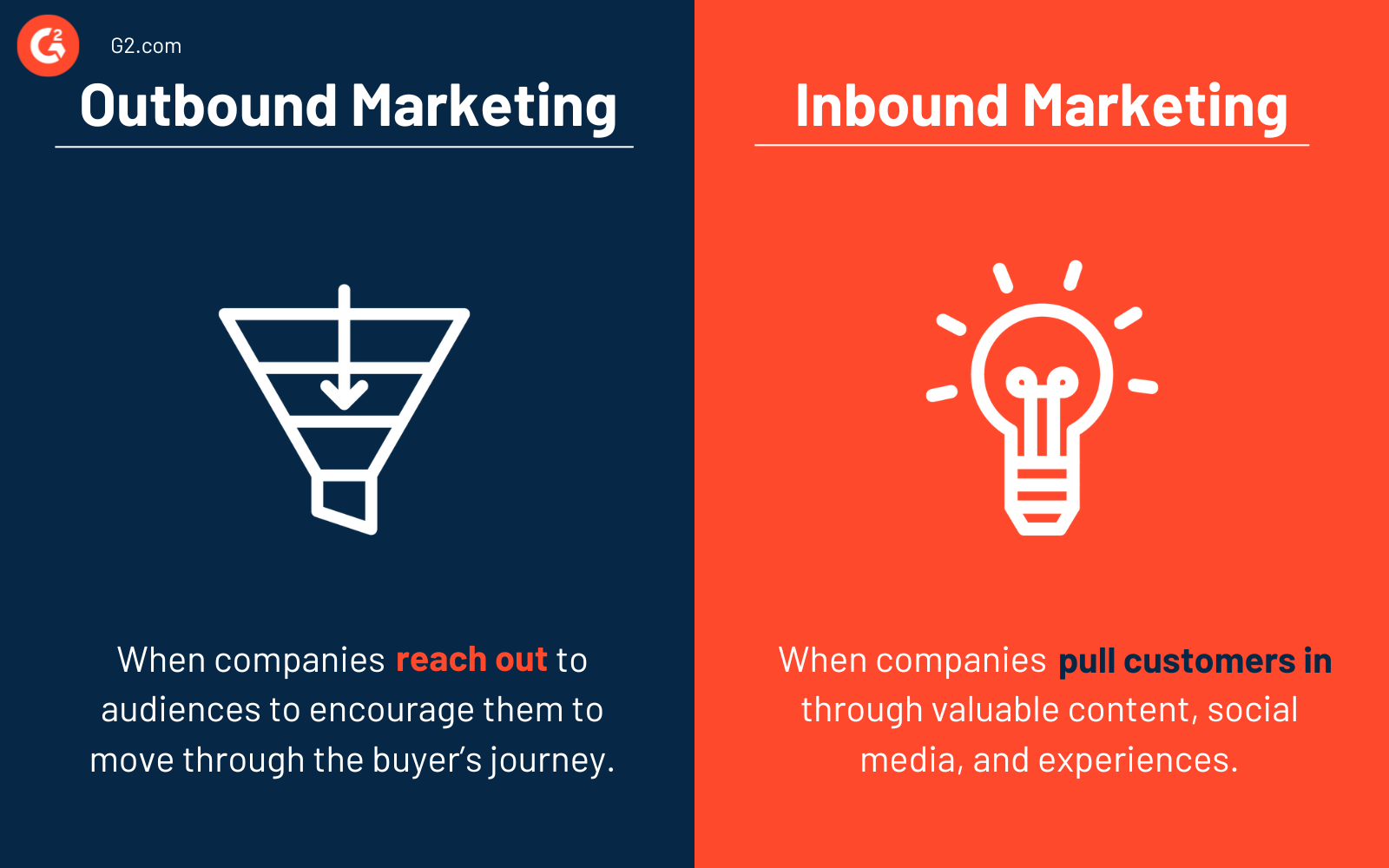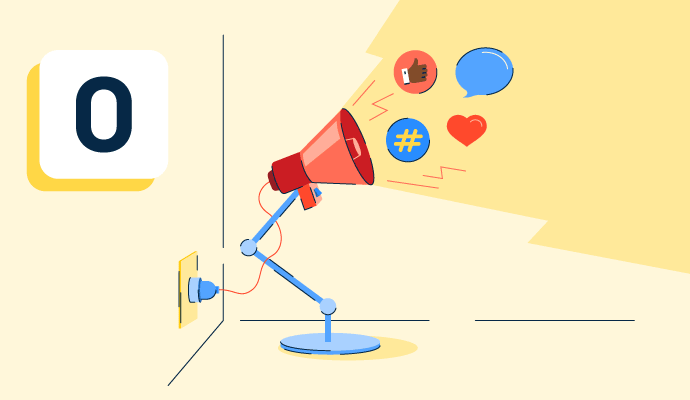What is outbound marketing?
Outbound marketing is the traditional method of reaching potential customers. In this form of marketing, companies take the initiative to engage with prospects without waiting for them to express interest.
Outbound marketing strategies often involve methods like cold calling or advertising. While often effective, outbound marketing can be expensive and perceived as intrusive or annoying by some consumers.
Organizations use marketing platforms to plan their outbound marketing campaigns, manage leads, and collect performance data. These tools also serve as a central hub for marketing-related interactions and data, helping marketers identify the most effective strategies and boost their return on investment (ROI).
Types of outbound marketing
Companies choose outbound marketing methods based on their industry, budget, and target audience. Often, they opt for a combination of methods and channels. This omnichannel outreach allows more precise targeting and personalization to engage audiences.
- Cold calling or emailing involves contacting potential customers who haven’t expressed prior interest.
- Outbound sales involves initiating sales calls and sales conversations from the company's side to the prospect.
- Commercials spread awareness about a company and its offers through television or radio channels to reach a wide audience.
- Direct mail involves sending flyers, brochures, or coupons to specific businesses or individuals.
- Print advertisements in magazines and newspapers create brand or product awareness.
- Paid online ads, such as banners or social media ads, help target a specific ideal customer profile (ICP).
- Trade shows and events allow companies to show their products or services to consumers in a relevant industry.
- Outdoor ads, like billboards or bus wraps, capture the attention of passersby in a targeted geographic region.
- Email blasts allow companies to send mass emails to potential buyers to promote new products and special offers.
Benefits of outbound marketing
Most businesses use some form of outbound marketing to generate awareness and interest. Some specific advantages include:
- Creating wide reach: Except for approaches like cold calling, outbound marketing allows organizations to reach large audiences. For example, a single billboard in a high-traffic area could get hundreds or thousands of views daily.
- Amplifying brand visibility: The more consumers interact with a brand, the more familiar they become with it. As they encounter outbound marketing campaigns across channels over time, they become increasingly aware of the brand and its products. This keeps the company top-of-mind when the prospect is ready to buy.
- Getting quick results: Unlike other forms of marketing that take months to generate leads, outbound marketing often has an immediate impact. When prospects see a paid social media ad, they may click through and purchase on the spot.
Outbound marketing best practices
Outbound marketing takes time and money. Organizations should follow these best practices to maximize their ROI:
- Create buyer personas: Companies can create messages that resonate with their target audience by getting to know them. Organizations should create buyer personas and semi-fictional profiles of their ideal customers. These profiles include the buyer’s demographic details, goals, and challenges.
- Conduct competitor analysis: Consumers are bombarded with marketing messages each day. Companies can find ways to set their products and services apart by analyzing competitors' approaches to outbound marketing.
- Craft compelling messaging: Organizations should turn to external or internal copywriters to craft clear, on-brand copy for emails and ads. Instead of simply explaining product features, strong copy highlights the value your product or services deliver.
- Include clear call to actions (CTA): In all outbound marketing messages, companies should clarify what action the audience should take next. For example, a banner ad’s CTA might be to ‘click to order,’ and an email might ask prospects to click a link to set up a free demo.
- Test and refine campaigns: To optimize outbound marketing campaigns, companies can test different offers or messaging. They can run A/B testing, which gauges how audiences react to two different versions of an ad, or they might ask for feedback through surveys or consumer interviews.
- Monitor results: Instead of simply hoping for the best, companies should monitor the results of their outbound efforts. They can compare key performance indicators (KPIs) like click-through rate (CTR) or cost per lead (CPL) to see which campaigns or methods perform best and find ways to improve.
Outbound marketing vs. inbound marketing
While outbound marketing remains popular, some companies have included more inbound marketing in their recent strategy.

Differences between outbound and inbound marketing include:
In outbound marketing, companies reach out to audiences to encourage them to take the next step in the buyer’s journey. Outbound methods typically cost more, making the results difficult to measure. However, they reach many prospects and can quickly influence them to purchase.
By contrast, inbound marketing pulls customers in through valuable content and experiences. Instead of using paid ads or direct mail to move customers down the funnel, inbound marketing uses techniques like content marketing, social media engagement, and search engine optimization (SEO). Companies play the long game with these methods, nurturing leads over time. Inbound marketing typically has a better cost per lead (CPL) and helps brands establish themselves as helpful and trustworthy industry players.
Learn more about KPIs and how they can be used to monitor the results of outbound marketing efforts.

Kelly Fiorini
Kelly Fiorini is a freelance writer for G2. After ten years as a teacher, Kelly now creates content for mostly B2B SaaS clients. In her free time, she’s usually reading, spilling coffee, walking her dogs, and trying to keep her plants alive. Kelly received her Bachelor of Arts in English from the University of Notre Dame and her Master of Arts in Teaching from the University of Louisville.




















